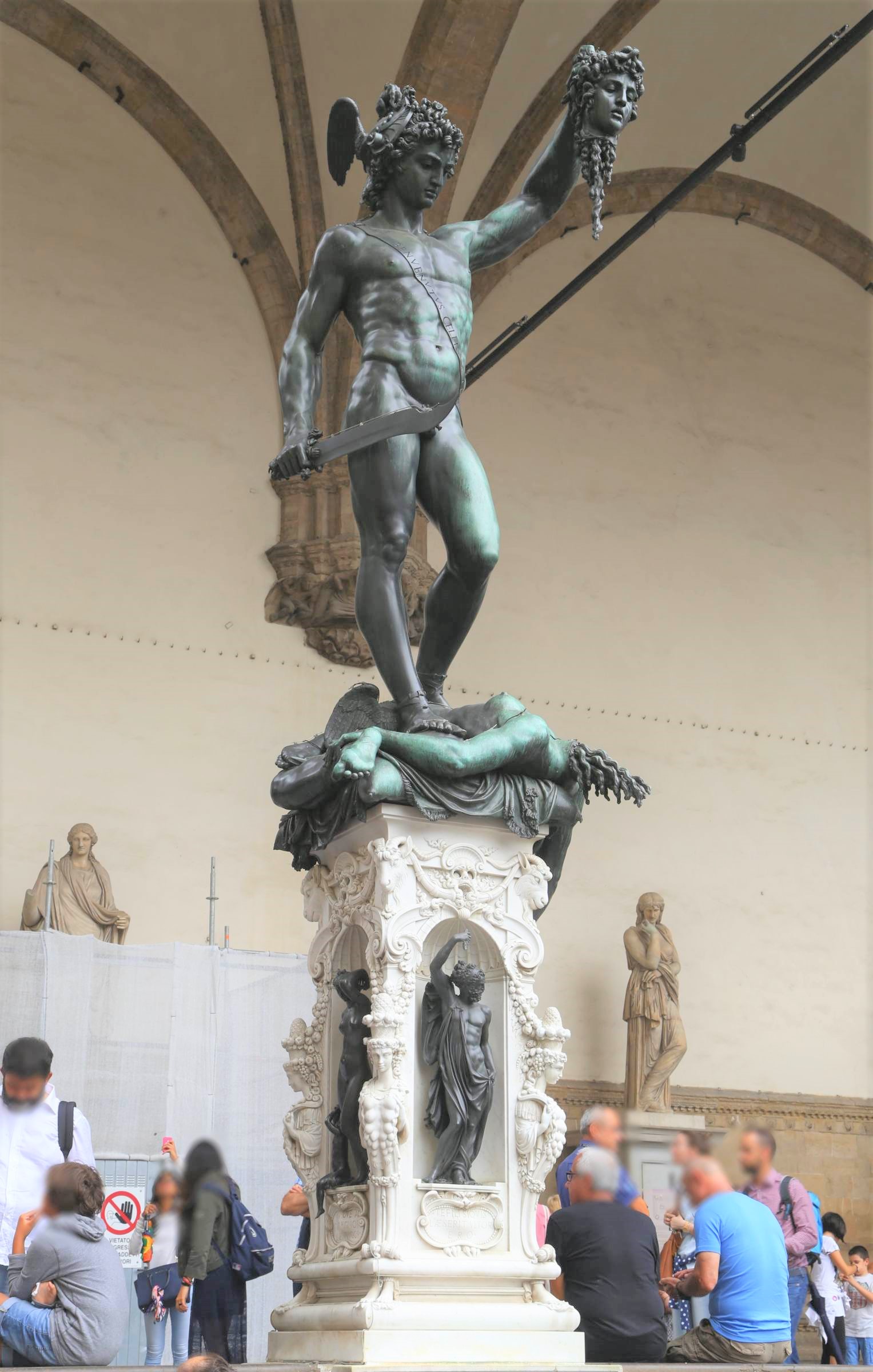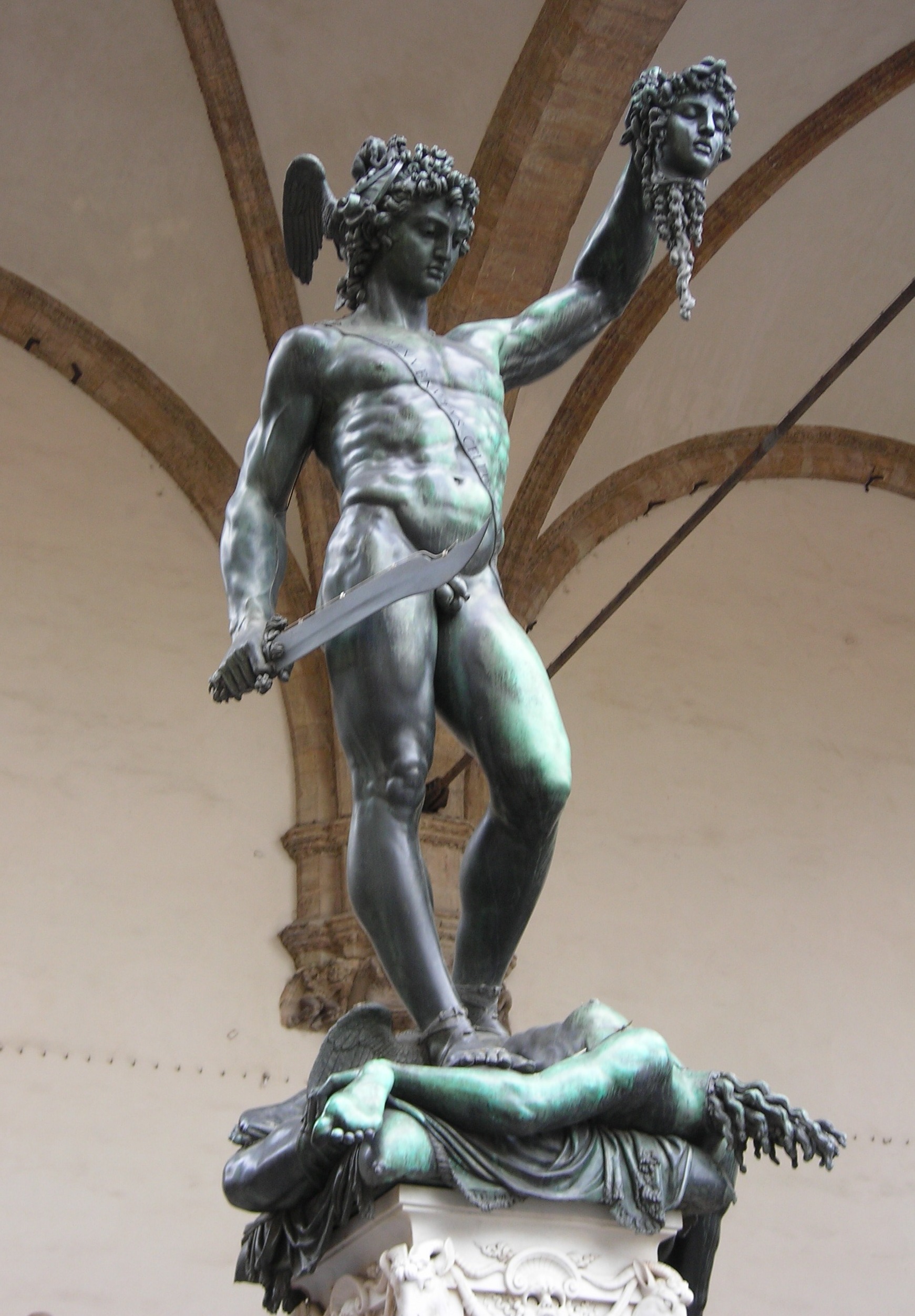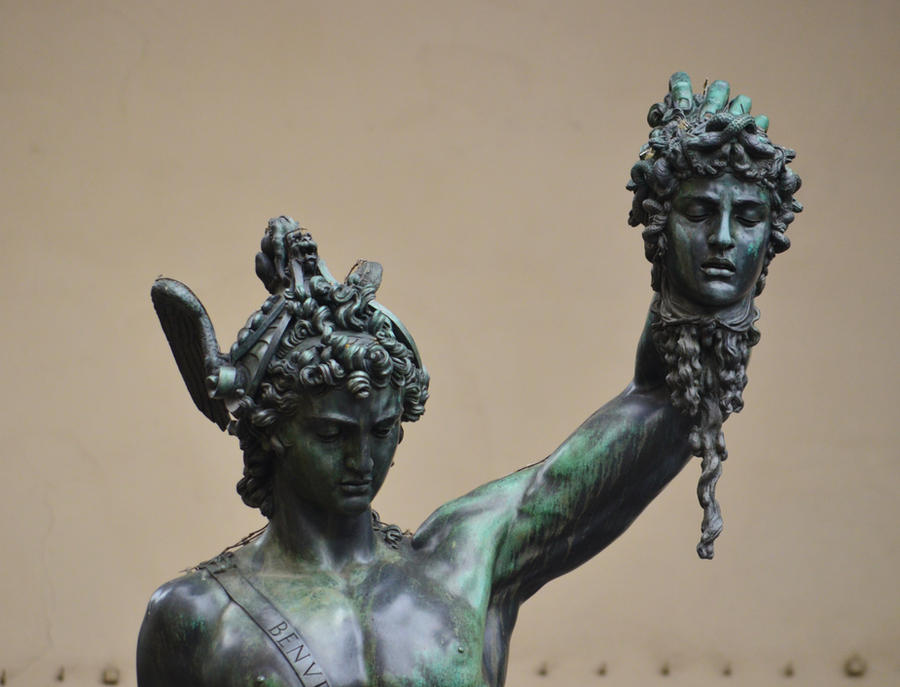Perseus holding the head of Medusa in Piazza della Signoria represents Cellini’s Triumph.

A journey to the Piazza della Signoria in Florence is a pilgrimage through the annals of Renaissance art, where every corner reveals a treasure trove of masterpieces. Among the illustrious collection of statues that grace the square, including Bandinelli’s Hercules and Cacus, Giambologna’s The Rape of the Sabine Women, and the iconic Medici lions, one sculpture stands out above all others—Cellini’s breathtaking masterpiece, Perseus with the Head of Medusa.

As the name suggests, Cellini’s sculpture portrays the legendary hero Perseus in a moment of triumph, holding aloft the severed head of the Gorgon Medusa while her lifeless body lies at his feet. This iconic scene from Greek mythology continues to captivate audiences with its timeless tale of bravery, heroism, and the triumph of good over evil.
Commissioned by Cosimo I de Medici upon his ascension to the grand ducal throne, Perseus with the Head of Medusa was unveiled to the public in 1554, marking the beginning of its enduring legacy in the heart of Florence. For centuries, the statue has held court in the Piazza della Signoria, sharing the stage with illustrious companions such as Michelangelo’s David and Donatello’s Judith and Holofernes.

While other renowned sculptures in the square have been relocated to museums for preservation, Cellini’s Perseus has remained a steadfast sentinel, braving the elements and the passage of time for nearly five centuries. Briefly covered for restoration work, the statue has stood as a symbol of Florence’s artistic heritage and cultural identity, drawing visitors from around the world to marvel at its beauty and craftsmanship.

In addition to its stunning visual impact, Cellini’s Perseus contains hidden layers of symbolism and intrigue. A keen observer will notice an unconventional signature hidden in plain sight—upon closer inspection of Perseus’s helmet and hair from behind, one can discern the features of a face and a beard. While not an exact likeness, many scholars believe that Cellini sculpted a self-portrait into the back of his hero’s head, leaving a playful mark of his own identity for future generations to discover.
As we stand before Perseus with the Head of Medusa in the Piazza della Signoria, we are transported back in time to an era of artistic innovation and cultural flourishing. Cellini’s masterpiece serves as a testament to the enduring power of myth and legend, and the timeless appeal of Renaissance art. Amidst the hustle and bustle of modern life, it remains a beacon of beauty and inspiration, inviting us to contemplate the enduring themes of heroism, sacrifice, and the triumph of the human spirit.